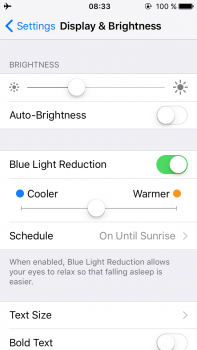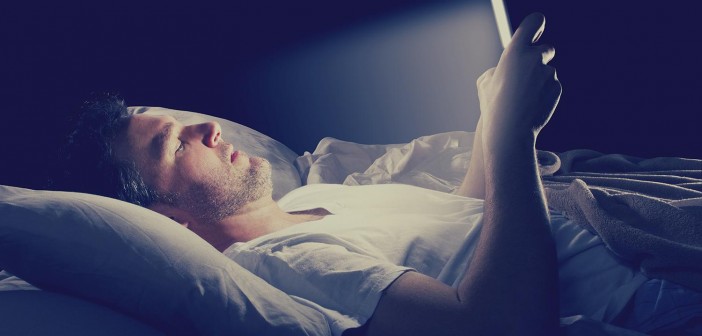Before the invention of artificial lighting, the sun was the only source of light and people were spending their night in complete darkness. Today, in a world much more illuminated, we take for granted our access to light. Watching Netflix on your computer, texting on your smartphone, using social medias or just reading articles on your tablet… Screens monitors are now part of our daily life, even when it’s time to go to bed.

Exposure to blue light emitted by electronics at night are bad for your health.
During night time, light is disturbing our body biological clock. Indeed, the blue light coming out from many of our electronics devices such as smartphone, laptops, tablets or desktop, have a serious impact on the quality and quantity of our sleep. “In the past 50 years, there has been a decline in average sleep duration and quality, with adverse consequences on general health”. Being in the dark when it is time to sleep is important. The problem is that we are preventing it by starring a bright screen for hours after the sun has gone down. At the end of the day we need to be more mindful of our blue light exposure. Proximity is an important factor. That’s why smartphones, tablets, and laptops are perceived as a bigger risk than light bulbs or TV screens.
In fact, blue wavelength seems to be the most disruptive at night time because it makes your brain think that is not time to go to sleep yet. It inhibits the production of the sleep hormone melatonin, and phase-shift our biological clock.
Blue wavelength has its dark side but it is essential during day. Indeed, at day time, blue light improves alertness (attention, reactions times), performance and even our mood. “There’s nothing wrong with blue light for most of the day,” says Dr. Breus. “You just don’t want to have it about 90 minutes or so before bed.”
What you can do :
- Avoid looking at bright screens two to three hours before going to bed.
- If you work at night and use a lot of electronics devices, you might consider wearing blue-blocking glasses.
- Exposing yourself to a lot of sunlight during the day – especially in the morning – will improve your ability to sleep at night, as well as your mood and alertness during day time.
Why not using software ?
One of the most popular solutions is F.lux. This software changes the color of your device’s display depending on the time of the day and your location. Your screen will get warmer at night and will have more blue light during the daytime. F.lux is available for Mac, Windows and Linux operating systems.
Apple is also going to implement a night shift mode with the same functions as F.lux in iOS 9.3. For android devices, there is a similar app called Twilight.

F.lux for Mac OS X

Night Shift Mode in iOS 9.3beta




